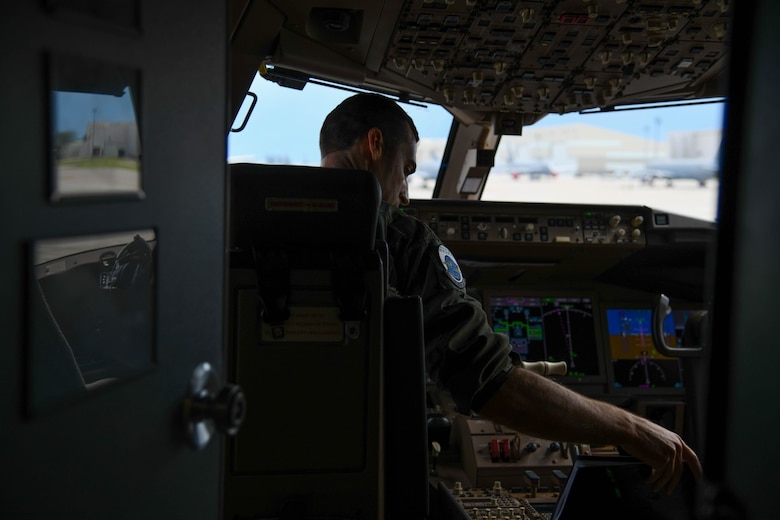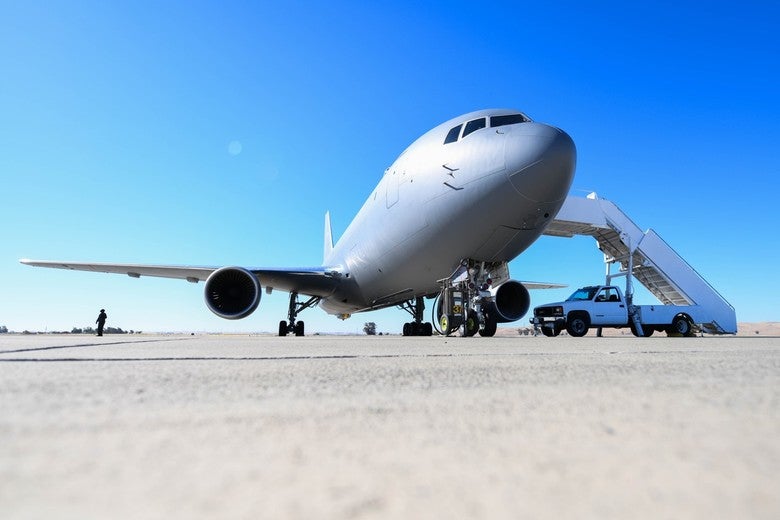KC-46 Pegasus Tanker Completes its First Aeromedical Evacuation Mission
The 931st Air Refueling Squadron and 22nd Aircraft Maintenance Squadron had the opportunity to participate in a total force mission to test the capabilities of the new KC-46A Pegasus Aireal Tanker. This mission involved the aircraft’s first aeromedical evacuation on 10th July where the Airmen assigned to the squadron were able to participate and evaluate in the performance of the aircraft.
The aeromedical evacuation took place over 17 hours in which six total flights were made. The mission originated out of Joint Base Andrews in Maryland and transported five patients and two attendees to Naval Station Norfolk, VA, then on to Patrick AFB, FL then finally Travis AFB, CA.

Major Michael Murphy, who is a pilot in the 905th Air Refueling Squadron, had the following to say about the mission the 931st took on with the Pegasus:
“I don’t think most people realize the amount of training and dedication the team has when they come out and do a mission like this. Everyone really performed well and at a high level.”
The KC-46 Pegasus has spent the last year going through its paces in an extensive set of testing missions which have been led by the Air Force Testing and Evaluation Center. The Air Force Testing and Evaluation Center was also responsible for evaluating the performance of the first aeromedical mission that took place this month.
The completion of this mission represents a significant and positive milestone in the aircraft’s ability to perform one of its three mission sets: Aireal Refueling, Airlift, and Aeromedical Evacuation. The KC-46 is capable of transporting 15 additional crew members aside from the two pilots and one boom operator. This additional crew includes aeromedical evacuation crew members.
As part of the airlift capability, the KC-46 can transport up to 114 people, 18 463L Pallets, or 58 total patients (24 litters, 34 ambulatories). Master Sgt. Heath Hampton commented on the last capability – patient care:
“Some of the things we were looking for was whether or not the aircraft could sustain patient care over a 14-hour span, that was proven today. It was a proof of concept that the KC-46 could be used as a viable aeromedical evacuation platform.”

The notable patient care provided by the onboard aeromedical evacuation team was an integral factor for the successful execution of the mission. This allows mission-critical patient care during time-sensitive times as they transport to their home installations for follow-on care.

The Total Force team consisted of two flight nurses and three medical technicians who were all qualified on the KC-46. They used a syllabus to guide the execution of the training which consisted of numerous patient scenarios and configurations for the aircraft and crew.
“It’s incredible how AE touches the patient from the point of injury all the way back home,” said Lt. Col Jason Arndt, 133rd Airlift Wing branch chief of aeromedical evacuation. “Throughout this whole journey, there’s a total force involved. It’s nice when a whole team can come together and work seamlessly to transport patients safely and effectively.”

Key features, such as increased lighting visibility, electrical power, and storage capacity, allowed the team to provide quality care in the air. Since its delivery in January of 2019, there has been major headway with the aircraft’s operational capacity. It seems that despite recent setbacks regarding the delivery of some of the new KC-46 aircraft that the program is destined for great success in all three disciplines it was designed for.
All Photos Credit: United States Air Force

